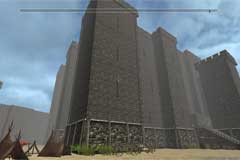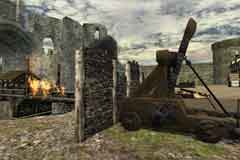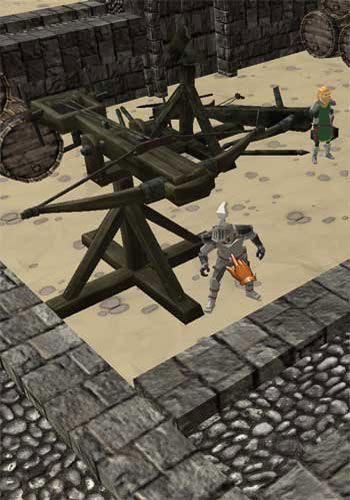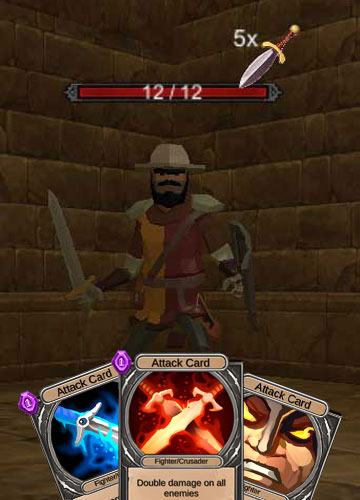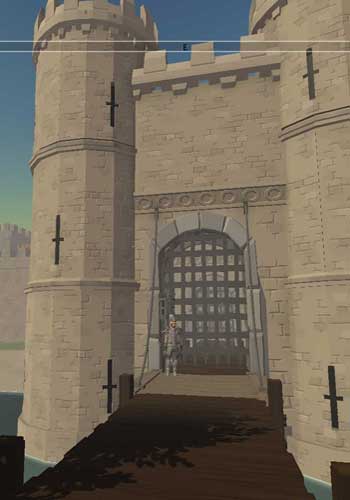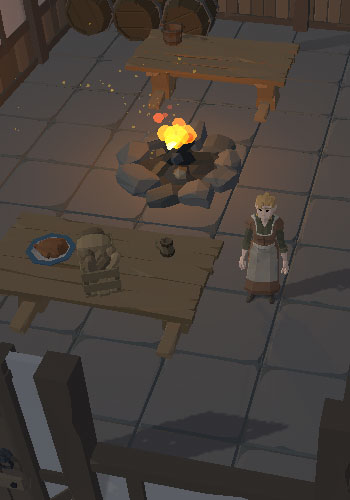 ather of the 'Kingmaker'. Richard held estates in Yorkshire which he inherited from his father Ralph Neville who was Earl of Westmorland. Richard married Alice, the heiress to the estates of Salisbury and this gave him control of lands in the south of England as well.
ather of the 'Kingmaker'. Richard held estates in Yorkshire which he inherited from his father Ralph Neville who was Earl of Westmorland. Richard married Alice, the heiress to the estates of Salisbury and this gave him control of lands in the south of England as well.| Born | Born At | ||
| Died | 1460 | Buried At | |
| Father | Neville, Ralph (Earl of Westmorland, Earl Marshal) | Mother | Beaufort, Joan (Countess of Westmorland) |
| Born | / |
| Died | 1460 / |
 ather of the 'Kingmaker'. Richard held estates in Yorkshire which he inherited from his father Ralph Neville who was Earl of Westmorland. Richard married Alice, the heiress to the estates of Salisbury and this gave him control of lands in the south of England as well.
ather of the 'Kingmaker'. Richard held estates in Yorkshire which he inherited from his father Ralph Neville who was Earl of Westmorland. Richard married Alice, the heiress to the estates of Salisbury and this gave him control of lands in the south of England as well.Related Episodes
Henry VI and Joan of Arc (click here)
Wars of the Roses Phase One (click here)
Wars of the Roses Phase Two (click here)
Spouses
Children
Siblings
Family Tree Details
+Montacute, Alice (Daughter of Earl of Salisbury)
= Neville, Richard (Earl of Warwick, 'The Kingmaker') (b.1428 - d.1471)
| +Anne (Beauchamp, Countess of Warwick)
| = Neville, Isabel (Duchess of Clarence) (b.1451 - d.1476)
| | +George (Duke of Clarence) (b.1449 - d.1478)
| | = Plantagenet, Edward (Earl of Warwick) (b.1475 - d.1499)
| | = Margaret (Countess of Salisbury) ( - d.1541)
| = Neville, Anne (Duchess of Gloucester, Queen of England) (b.1456 - d.1485)
| +Edward (of Lancaster, Prince of Wales) (b.1453 - d.1471)
| +Richard (III, King of England 1483-1485) (b.1452 - d.1485)
| = Edward (of Middleham, Prince of Wales) (b.1473 - d.1484)
= Neville, John (Earl of Northumberland, Lord Montague) ( - d.1471)
| +Ingoldsthorpe, Isabel
| = Neville, George (Duke of Bedford) (b.1461? - d.1483)
= Neville, George (Archbishop of York) ( - d.1476)
= Neville, Cecily (Duchess of Warwick) (b.1425 - d.1450)
| +Beauchamp, Henry (1st Duke of Warwick) ( - d.1446)
| = Beauchamp, Anne (Countess of Warwick) (b.1443? - d.1449?)
= Neville, Katherine (b.1442? - d.1504?)
+William (Lord Hastings) (b.1430? - d.1483)
Neville, Richard (Earl of Salisbury) ( - d.1460)
+Montacute, Alice (Daughter of Earl of Salisbury)
= Neville, Richard (Earl of Warwick, 'The Kingmaker') (b.1428 - d.1471)
| +Anne (Beauchamp, Countess of Warwick)
| = Neville, Isabel (Duchess of Clarence) (b.1451 - d.1476)
| | +George (Duke of Clarence) (b.1449 - d.1478)
| | = Plantagenet, Edward (Earl of Warwick) (b.1475 - d.1499)
| | = Margaret (Countess of Salisbury) ( - d.1541)
| = Neville, Anne (Duchess of Gloucester, Queen of England) (b.1456 - d.1485)
| +Edward (of Lancaster, Prince of Wales) (b.1453 - d.1471)
| +Richard (III, King of England 1483-1485) (b.1452 - d.1485)
| = Edward (of Middleham, Prince of Wales) (b.1473 - d.1484)
= Neville, John (Earl of Northumberland, Lord Montague) ( - d.1471)
| +Ingoldsthorpe, Isabel
| = Neville, George (Duke of Bedford) (b.1461? - d.1483)
= Neville, George (Archbishop of York) ( - d.1476)
= Neville, Cecily (Duchess of Warwick) (b.1425 - d.1450)
| +Beauchamp, Henry (1st Duke of Warwick) ( - d.1446)
| = Beauchamp, Anne (Countess of Warwick) (b.1443? - d.1449?)
= Neville, Katherine (b.1442? - d.1504?)
+William (Lord Hastings) (b.1430? - d.1483)
Timeline
The Duke of Bedford led an English army to surround the French town of Orléans and to begin the siege. Orléans was chosen because it was the most important city still under the control of Charles VII. The city was well prepared for the siege and even though the there were a small number of French soldiers in the city the defences held. Thomas Montacute, earl of Salisbury, was killed when he was hit by debris of an exploding cannonball. The siege continued into the harsh winter. The death of the Thomas Montacute meant that the Earl's title was transferred to Richard Neville who had married his daughter Anne. [1]
Birth of Richard Neville, the Kingmaker. Richard was the son of Richard Neville, 5th earl of Salisbury and Anne, the daughter of Thomas Montacute, 4th earl of Salisbury. [2]
With Richard, Duke of York running the country, several changes were made, one of which was to make the elder Richard Neville the Chancellor of England. Richard also made himself the Captain of Calais removing his rival the Earl of Somerset from the post.
King Henry VI had by his side at St. Albans the Dukes of Somerset and Buckingham, Lords Pembroke, Northumberland and Devon and around 2,000 Lancastrian men. They tried to hold the town against the Yorkists led by Salisbury and Warwick but Warwick was able to enter the town through an unguarded spot and attack the flanks of the Lancastrian barricades. Although this battle was small it left the Duke of Somerset dead along with Lord Northumberland and Clifford. As a result of this victory power again swung to the Yorkists although support from the Barons was not total. Richard, Duke of York, again became Protector of the Realm and the powerful position of Captain of Calais was given to the Earl of Warwick.
Led by Richard Earl of Salisbury the Yorkists in the north mobilised an army and headed south to meet the Duke of York at Ludlow. Salisbury was intercepted by a Lancastrian army led by Lord Audley at Blore Heath in Shropshire. The Lancastrians were the first to attack. Their first and second cavalry charges were repulsed and when the Lancastrian foot soldiers were also repulsed they turned and fled. In the battle Audley was killed and although two of Salisbury's sons were captured they were quickly released. The Yorkists had won this battle.
The Earl of Warwick with a force from Calais reached Ludlow and the combined army of the Yorkists attacked the King's army at Ludford Bridge near Ludlow. The men from Calais refused to fight their king and a weak Yorkist army was defeated. Richard Duke of York and his younger son escaped and fled to Ireland while Salisbury, Warwick and Edward of March (later Edward IV) fled to Calais.
The Yorkists marched first to Canterbury where the officers in charge of protecting the town against them joined forces with the rebels. They then moved on and arrived at London on July 2nd. There they were welcomed by the Mayor of London and the Archbishop of Canterbury. [3]
The Lancastrians's Court was in Coventry at the time of the Yorkist rebels entering London. When news reached them, the Lancastrians moved south to Northampton to meet the rebels. The Yorkists led by the Earl of Warwick wanted to talk but the Lancastrians led by the Duke of Buckingham wanted to fight. Although the Lancastrians had less men than the Yorkists, they did have control of a stronger position. The Yorkists managed to defeat the Lancastrians due to a section of the Lancastrian army led by Lord Grey of Ruthin moving away allowing the Yorkists through. Orders were given that the King and ordinary men should be spared, while the knights and lords should be killed. When the fighting was over the casualties were light, but the Lancastrian leaders, Buckingham, Shrewsbury and Egremont were dead and the King was captured.
On this day in history:
3D Virtual Reconstructions
Transport yourself back up to a thousand years and explore historical buildings as they may have appeared in the past. Built using the popular game development tool Unity 3D, these reconstructions will run in the most of the popular web browsers on your desktop or laptop computer.
Page Navigation
Selection of references used:
- 1: Duc de Castries, The lives of the Kings and Queens of France, ISBN:0-297-77676-2, Erdington Library
- 2: C. W. Oman, Warwick
- 3: Charles Ross, Edward IV
Explore the White Tower
Explore all four floors of the White Tower at the Tower of London using the Unity 3d game engine.
A Medieval Mystery
There appear to be some strange connections between the fourteenth century Old Wardour Castle and ancient stone circle Stonehenge.

1: Location
Old Wardour Castle appears to be aligned to ancient sites in the Stonehenge landscape.
2: Alignment
Stonehenge is aligned to the Summer Solstice. Old Wardour has a very similar alignment.
3: Size
Could the builders of Old Wardour used mesaurements from Stonehenge to layout the geometrical keep?
Learn More









